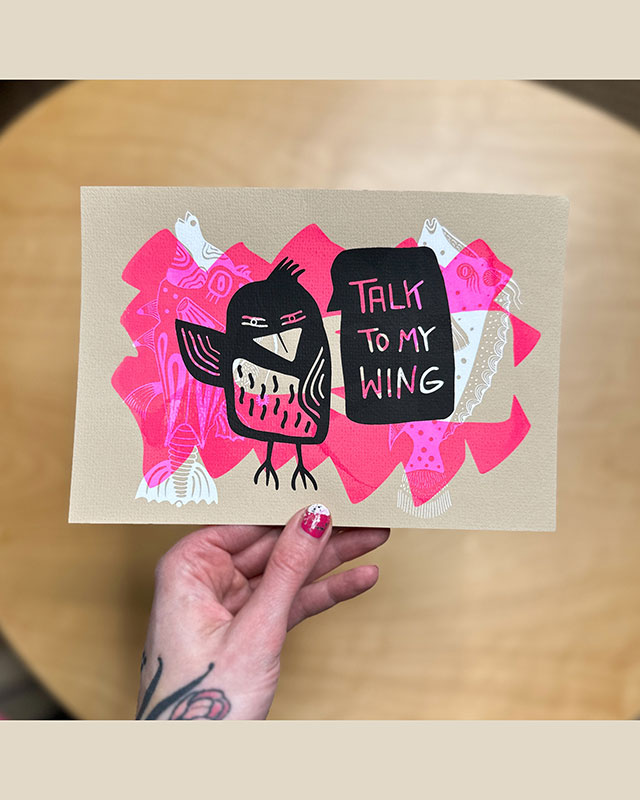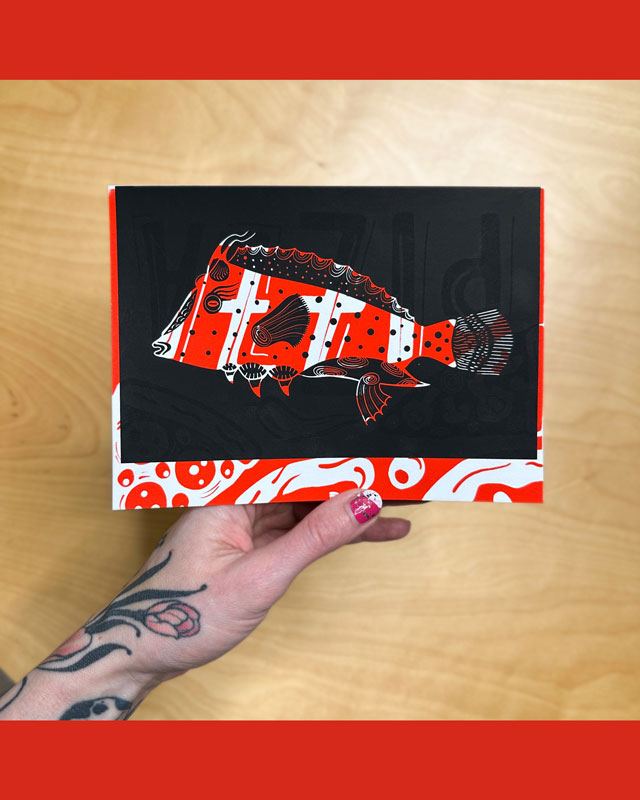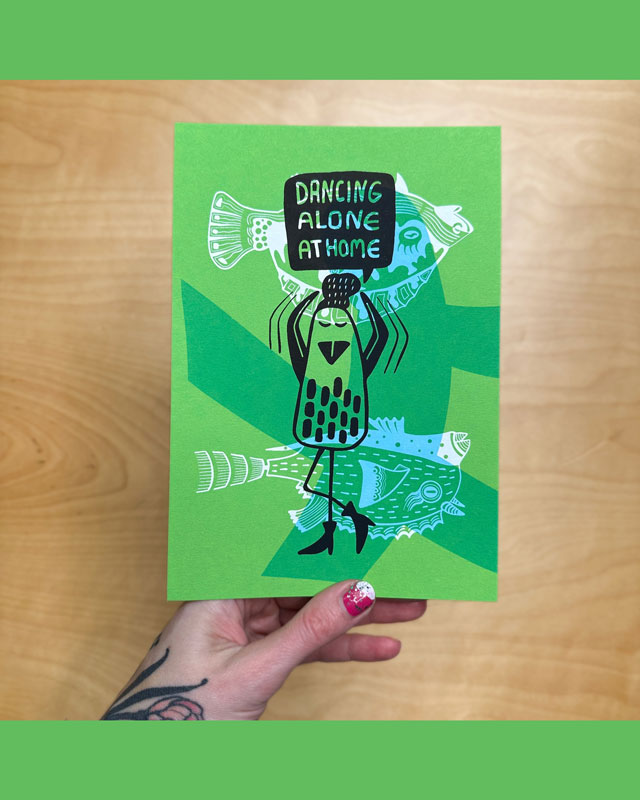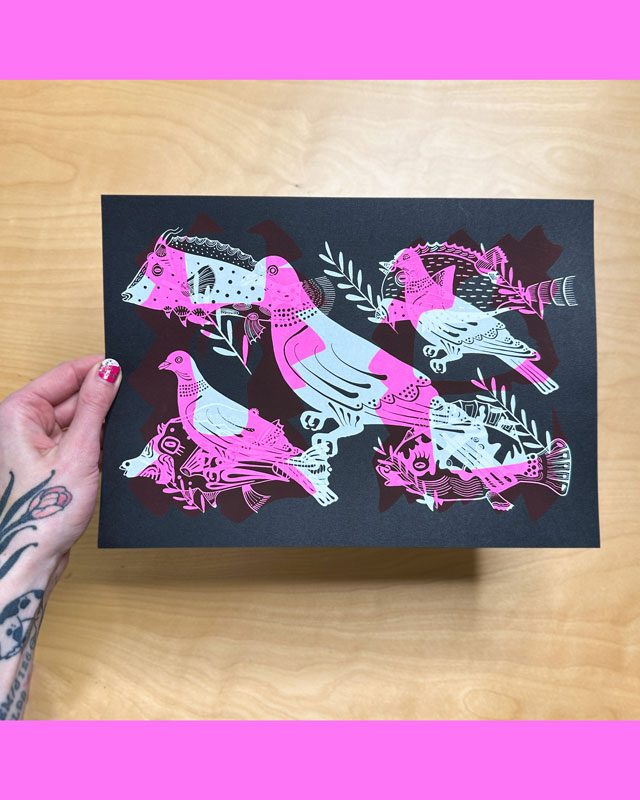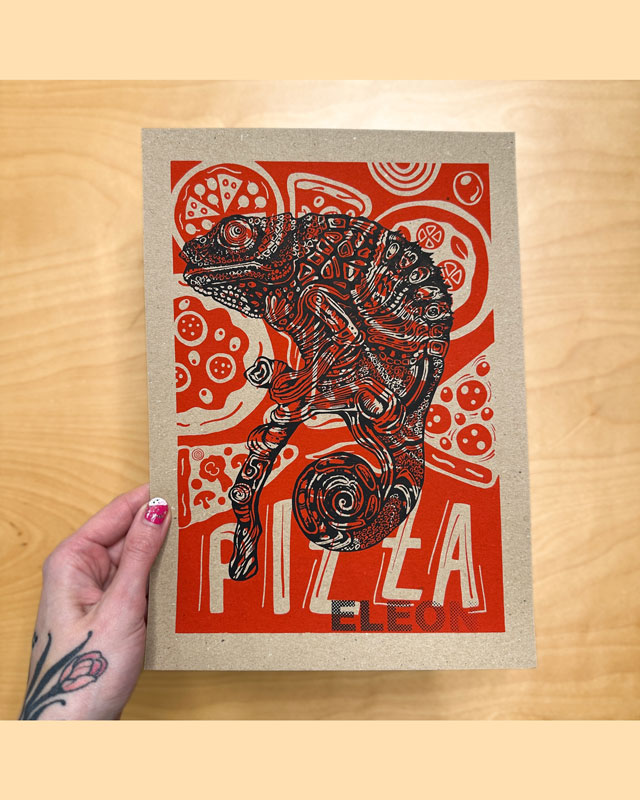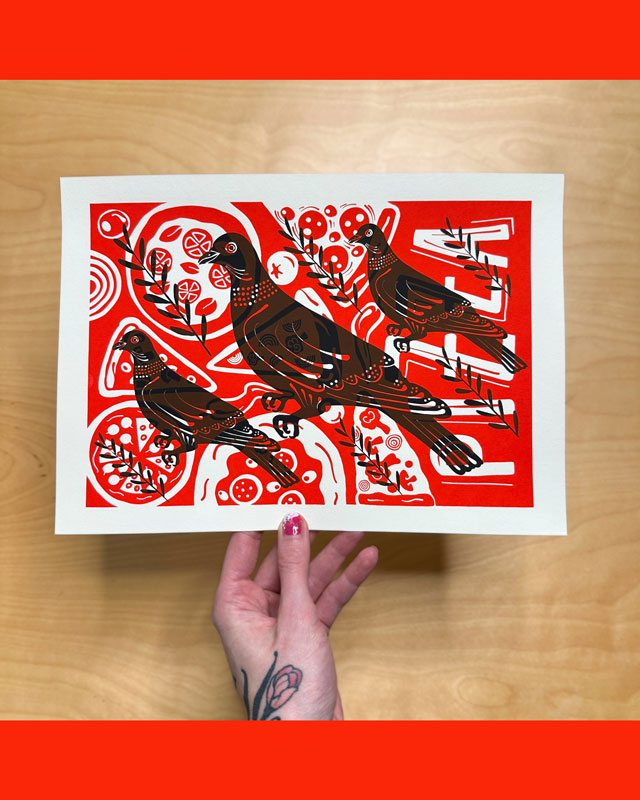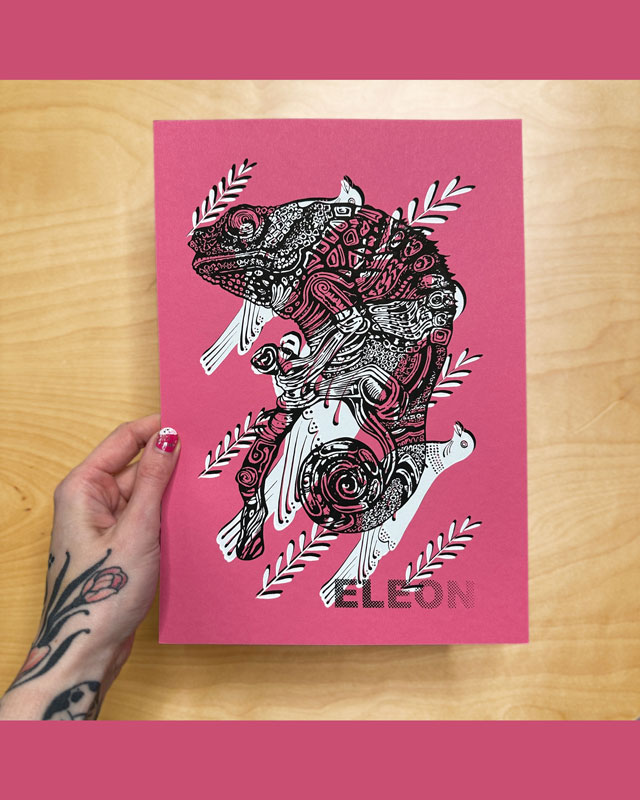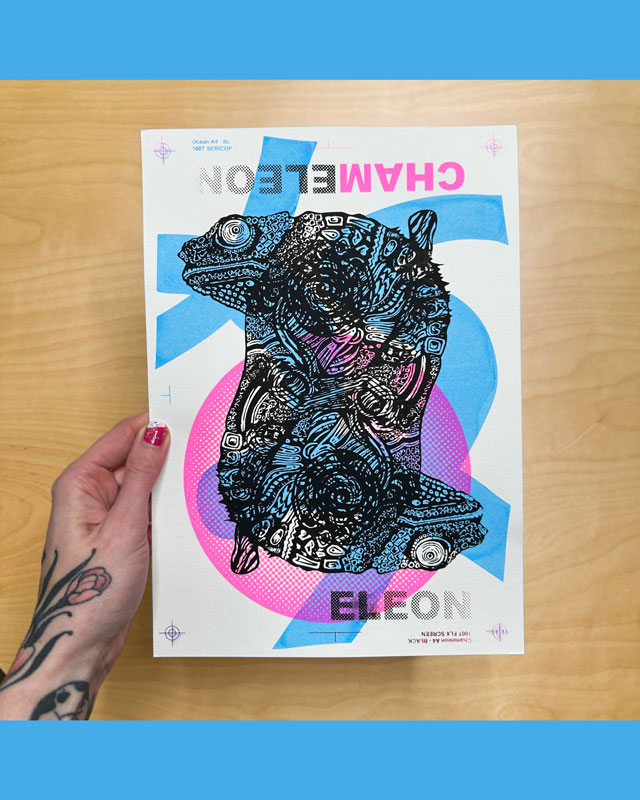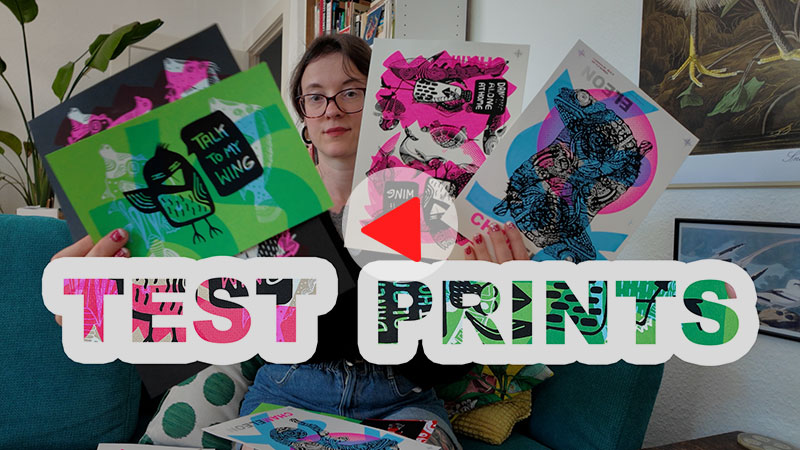
Monoprint Experiments and the Art of Letting Go
When printing, they just happen: test prints, misprints, fuckups, happy accidents. Little trial runs where you ask yourself, “Does this work? Is there enough ink on the screen? Is the design sitting right?”
These seemingly useless byproducts don’t end up in the trash. I keep them and continue working on them in future print sessions.
Over time, they turn into stand-alone monoprints. I see them as a kind of archive of coincidences, where different projects, designs and mistakes blend together without much of a plan or intention but with a wild character of their own.

From Test Print to One of a Kind
The original purpose of a test print is simple. I want to check if things are working as expected. Is the screen aligned, did my registration work? Is there enough ink? Does the design come through? But instead of throwing these prints away, I keep them. Sometimes for months.
Often I return to them at the very end of a print session, when the main edition is finished and I want to clear out the ink on the screen. That’s when I pull out the stack of test prints. I use whatever ink is left, printing loosely over older layers, letting shapes overlap and shift, mask certain areas or print slightly off center.
At that point, I am no longer aiming for precision. I’m reacting to what is already on the page, playing with what’s left, working freely. The results cannot be repeated. These become monoprints, unique and unpredictable pieces of printmaking that exist only once.
They often look chaotic, layered, sometimes even abstract. I love when older shapes peek through new ones, or when completely unrelated elements meet and turn into something new that tells its own story.

Test Print or Monoprint - What Is the Difference?
At first I wasn´t sure where is the line between a test print and a monoprint. As far as I understood now a test print originally has a technical purpose. I print something to see if it works as described above. Often it is off, sometimes it is perfect, sometimes it is just interesting enough to keep.
A monoprint begins when I return to these early prints and intentionally work on top of them. I add new layers, embrace surprises and let intuition lead the way. Some prints may look somewhat similar, especially when I use the same screen or repeat certain designs, but they are never exactly the same. Each one is impossible to recreate,
They feel like visual timestamps layered onto a single sheet. Elements from different projects, sometimes created months apart, all come together on the same piece of paper. That randomness creates something unpredictable and completely unique.
Below you can see my first ever batch of monoprints that I consider finished. I’m happy with how they turned out. Each one has between 2-6 layers printed over one another. I’ve added some of them to my Etsy shop as well. Since every print is truly one of a kind, I price them a bit higher than my other screenprints.
The spark for all of this came from a lovely tradition called Testprint Tuesday, that I first saw in the American gig poster screenprinting scene around 2010. I believe it was poster artist Lil Tuffy where I first saw these kind of test prints. If you search for this keyword on Instagram today you will find many terrific artwork from many artist. And now that I’ve started screenprinting myself, I had to chime in!
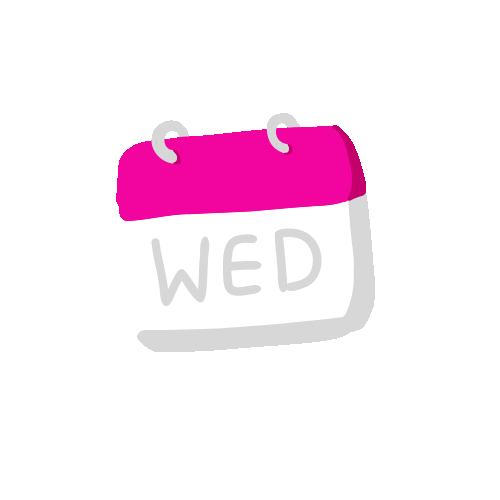
Every Tuesday (or on other days, hehe), printmakers share their test prints on social media using the hashtag #testprinttuesday. those experimental, messy, layered sheets that come from trying things out is all about celebrating the unexpected and the imperfect.
I found this idea incredibly refreshing. It encouraged me to see my own test prints not as waste but as creative material. A beginning instead of a dead end.
Funny enough, I could have used this kind of approach a long time ago with my linoprinting. That technique also allows for layering, reusing test prints, and playing with overprints in a very similar way. But for some reason, it just never occurred to me back then. It took starting with screenprinting for me to finally explore this more experimental and intuitive process.

If you’re into printmaking in any form, I really recommend giving this a try (if you haven´t yet). Whether you’re working with linocut, screenprint etc. This kind of intuitive, layered process can be a great way to loosen up creatively. Or perhaps even something like gel printing could be nice. With gel plates, you can explore monoprinting without much setup, just playing with textures, stencils, and color. You might be surprised what comes out of it.
So go ahead and pull out those abandoned ideas and let curiosity lead the way. Let the ink surprise you, trust the layers and enjoy whatever shows up on the page. If you don´t like it you can still trash it. :P
I would like to invite you to also watch my newest YouTube video where I talk about the testprints as well. Like most of my videos where I talk, it is in german, but you can turn on EN subtitle.
Upcoming blog post:
Hopefully it will be about my embossing machine, which I re-purposed to use as a press for my linocuts. Would then also be a good opportunity to re-print my rooster print, that is currently out of stock.
Newsletter Update:
My second newsletter is in the making. If you haven´t yet: sign-up here if you like to get it.


